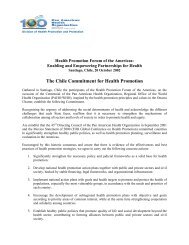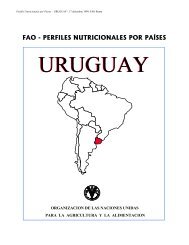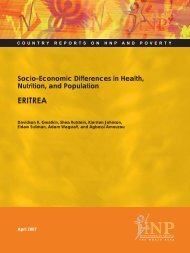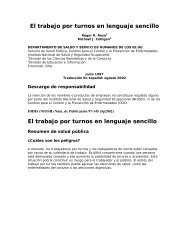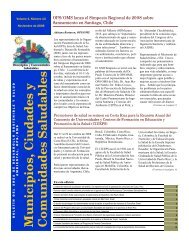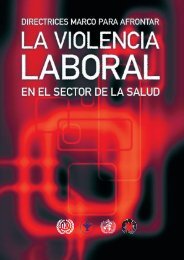Armenia 2000. - BVSDE
Armenia 2000. - BVSDE
Armenia 2000. - BVSDE
- No tags were found...
You also want an ePaper? Increase the reach of your titles
YUMPU automatically turns print PDFs into web optimized ePapers that Google loves.
The expression of findings in terms of quintiles of individuals has several implications:• Because fertility is often higher in lower economic households than among better-offones, the number of individuals per household will frequently be larger among the poor thanamong higher-income groups. In such cases, the number of households will vary systematicallyacross quintiles of individuals, and the results expressed in terms of quintiles of households candiffer significantly from those presented here.• The proportion of individuals “at risk” with regard to a particular indicator is alsolikely to vary across quintiles in many cases. (For example, in cases where fertility is higheramong poor people, a higher-than-average proportion of poor populations will consist ofnewborns at risk from infant mortality, young children subject to malnutrition, and pregnantwomen for whom antenatal care is relevant.) To facilitate the work of any investigators wishingto undertake calculations based on people at risk, the number of such people in each quintile ofindividuals is shown in part III.A.• As previously indicated, the population average figure provided for each indicator isequivalent to the weighted sum of the quintile rates for that indicator, where the weight assignedto each quintile rate is the number of people at risk in each quintile as presented in part III.A. Asa result of this weighting, the population average will usually differ from a simple mean of thepopulation quintile estimates.Quintiles of Males and Females, of Rural and Urban ResidentsAs also reported in the data and methods section, the tables on rural and urban residents and onmen and women were prepared using the same asset scores as for the total population; and ruralurbanresidents and females-males were separated from one another only after the entire samplehad been disaggregated into quintiles of individuals. This means that the figures given in therural-urban and female-male tables refer to females-males and rural-urban residents belonging toeach quintile of individuals in the total population, as distinct from quintiles of females, of males,of rural residents, or of urban residents alone.The consequence of this distinction is particularly evident with regard to rural and urbanresidents. Since rural residents tend to be poorer than urban dwellers, they normally form aconsiderably higher proportion of individuals in the lower economic quintiles of the totalpopulation than in the higher ones. Conversely, urban residents tend to be concentrated in thehigher economic groups. As a result, the number of individuals in each of the urban and ruralquintiles usually varies greatly and systematically; and when this is the case, the figures presentedin the rural-urban tables can differ significantly from those produced by a computation procedurethat places the same number of rural and urban residents in each rural quintile or each urbanquintile. (The results may also differ significantly from application of an approach featuring theseparate calculation of index values for urban and for rural groups. While such separate indexvalues may well be preferable conceptually, their calculation involves complexities that preventedtheir preparation for this report.)- 42 -




